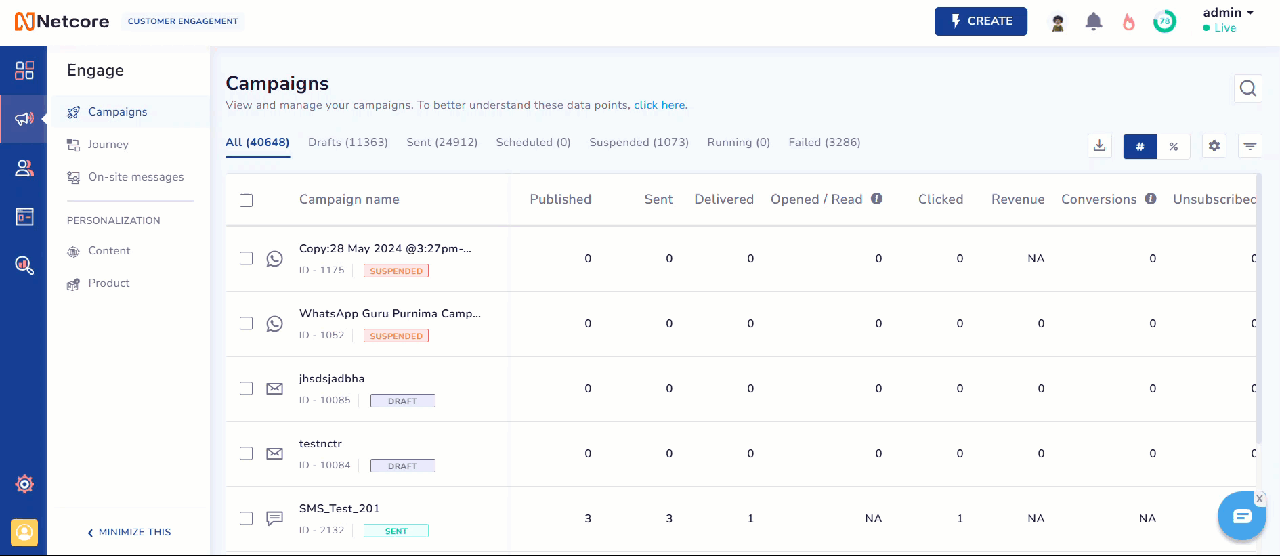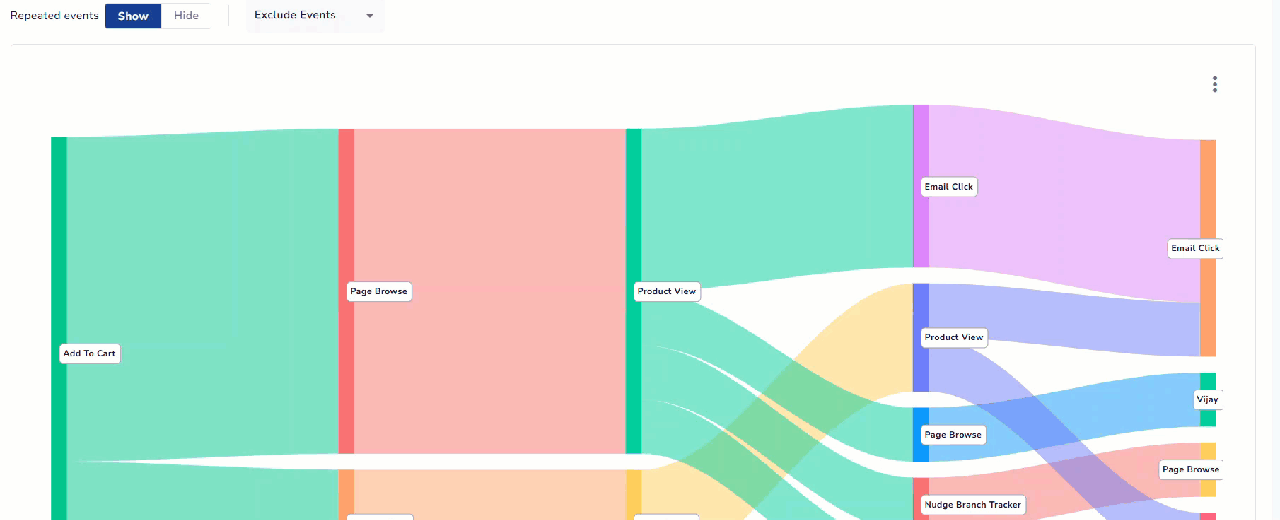User Path Analysis
Understand how users interact in your web and mobile apps with User Path analysis.
Overview
User Path Analysis on the Netcore CE dashboard helps you understand the various routes users take within an app, website, or across other communication channels to complete an action. User paths represent a sequence of events in your product (app or web) that start from or lead to a desired action. They are measured by the number of times users perform those events. This feature is important for understanding user behaviors. By analyzing user flows, you can find out where users drop off and act on those points by changing content strategy or reducing the number of steps.
Key benefits
- Understand the various journeys users follow to complete a task within an app or on a website.
- Identify behaviors and events that happen before an app uninstall.
- Analyze the sequence of actions after users engage with your web/ app.
- Use path insights to create content strategies and decide on user retention and acquisition steps.
User Paths Listing
The listing page displays two columns: All user paths and Starred. All created user paths appear under All User Paths, while starred paths are listed in the Starred column. To add a path to Starred, click  located to the left of the path name.
located to the left of the path name.
Create User Path
- Log in to the Netcore CE dashboard and navigate to Analytics > User Path Analysis > CREATE.
Refer to the table below for the options for creating a User Path.
| Option | Description |
|---|---|
| Duration | Select the time period for analyzing user activity. |
| Target audience | Select the group of users you want to analyze, including existing contacts, lists, or segments. |
| Exclude audience | Exclude specific contacts, pre-defined lists, or segments from your analysis. |
| User path window | Define the time frame in Days, Minutes, or Hours for how long to track user actions within the path. Select the value between 1-30 and click Apply. |
| User flow steps | Set the number of steps (actions) in the user path flow. Choose between 2 and 15 steps. |

Create an User Path
Once you have added the necessary parameters, click CREATE. A chart is generated based on your filters.
User Path Details
Specify user flow to generate the user path. Refer to the table for the options available to create a user path.
| Option | Description |
|---|---|
| Starts with | View the paths users take after the selected starting event. |
| Ends with | View the paths users take leading up to the selected ending event. |
| Both | View user paths between a starting and ending event. |
| Channel | Select App or Web to track activity within that channel. |
| Activity | Select from your list of created events from the dropdown for user path analysis. |
| Repeated events | Switch between Show or Hide to view the events. |
| Exclude events | Select the events you want to exclude from the dropdown from user path analysis. |
Download your data in various formats. Click  to export data as per your preference. Available export options are:
to export data as per your preference. Available export options are:
- Export as PDF
- Export as PNG
- Export as JPEG
After adding all desired filters to your user path analysis, click SAVE in the top right corner. Your created user path will appear on the User path listing screen.
Understanding User Paths Chart
User paths help you visualize how users move through a website or app using a chart or graph. This chart shows steps and paths from left to right. Refer to the table below to understand the different user path types.
| User path type | Description |
|---|---|
| Starts with | Displays the percentage of users moving to the next step and those who dropped off. Indicates transitions between nodes with origin and destination names and percentages. |
| Ends with | Displays the percentage of users coming from previous steps compared to the ones coming directly. Indicates how many users entered the next step and their percentages. |
| Both | Displays the percentage of users moving to the next step and those who dropped off. Indicates transitions between nodes with origin and destination names and percentages |

Example of a User Path Chart
Updated about 1 year ago
